Customer acquisition is the first—and vital—stage of your sales funnel.
No matter how good the latter parts of your funnel are, if you’re not getting customers through it, you won’t have a SaaS company for very long—no matter how great your product is either.
Buffer grew from 0 customers to 55k users and $150k in recurring revenue in ten months.
Zapier grew from 0 users to 600,000 users in three years.
And in two years, Slack grew from 0 teams to over 30,000 teams using Slack and valued at over $1 billion.
How did they do it?
First, they started with a good product – a product that solved actual problems. But they still had to get the word out. They still had to work for their customers.
Each one of these companies had a unique customer acquisition strategy that helped accelerate their growth. Without a solid acquisition strategy, their product would have died.
You can discover more growth marketing case studies here.
So you know it’s important. You know it’s essential. But how do you do it?
Before you even begin to think about tactics and strategies, you need to think about your customers.
Clearly Identify What Pain You’re Solving
A successful company solves its customers’ big pain points. Every business has some necessary process that is painful by taking up too much time or costing too much money.
Your business must be either…
- saving your customers time
- saving your customers money
- or making your customers new money
If you can create a company that does all three, then you’re well on your way to growing your company if you can deliver the right message to the right audience.
Find Out Who Benefits the Most from Your Product
Michael Stelzner of the Social Media Examiner interviewed Ted Wright who created Fizz, a word of mouth marketing agency.
Ted talked about how he helped Bissell sweepers grow 40% by targeting the customer segment who could benefit the most out of Bissell’s products.
Although Bissell is not a Saas company, the case study illustrates a great point.
If you can find and laser focus your marketing on the right segment, you will see fast growth from word of mouth, because these will be the people who love your product, benefit the most from it, and after using it won’t know how they lived without it.
To do this the right way, you need to know your customers’ demographics and where these people are online so you can market to them.
This will actually reveal the best acquisition channels for your company.
Once you’ve identified your best customer segment, you need to determine how much you can spend on customer acquisition costs (CAC).
Know How Much You Can Spend on Acquiring Customers
We see a surprising amount of founders and marketing VPs who don’t know their LTV and CAC.
A good rule of thumb is to keep your LTV 3x higher than CAC. If your current numbers aren’t meeting this, consider raising your price or spend less on acquiring customers.
LTV can be calculated in a variety of ways, but this formula will work for most SaaS companies:
LTV = (average MRR per account x customer lifetime) x (gross margin %)
MRR = monthly recurring revenue
Here’s an example:
LTV = ($49 x 24 months) x 75% = $882
In the above example, the LTV is $882. That means you should keep your CAC at $294 or below for a healthy acquisition strategy.
This is the quick math on a napkin method, but you should really calculate these figures the complete and advanced way for the most accurate data.
If you’re a brand new SaaS company, or don’t have enough data to determine your LTV and CAC, you absolutely must keep detailed ongoing records to find these numbers out as soon as possible.
Determine Key Performance Indicators (KPIs)
Another thing a lot of founders miss is that not all acquisitions are the same.
By determining your KPIs, you’ll be able to more accurately filter out the better acquisition channels from the bad ones based on real data.
When HubSpot was in the growing phase of SideKick, their main KPI was to determine a true acquisition by a user performing one of six key functions of their app.
They knew that if a user was using one of those six key features, they were reaching a required outcome – what the user needs to happen while using your app.
According to Dan Wolchonok, a member of the SideKick growth team, you can determine your KPIs by the following three attributes:
- Is it a core function of your app? It should be a feature that best represents your app.
- Is it authentic? It can’t be too easy to attain not guarantee any real value later on.
- Will they get real value out of it? Will they able able to see the value in upgrading?
Monitor Your Results
Now that you have a small list of your top customer segments, you know how much can spend on acquiring customers, and you know how to best measure what a true customer is, you need to set up a process to monitor your acquisition performance.
For most companies, a simples Excel or Google Sheet will do perfect.
Here is a screenshot of SideKick’s growth monitoring spreadsheet:
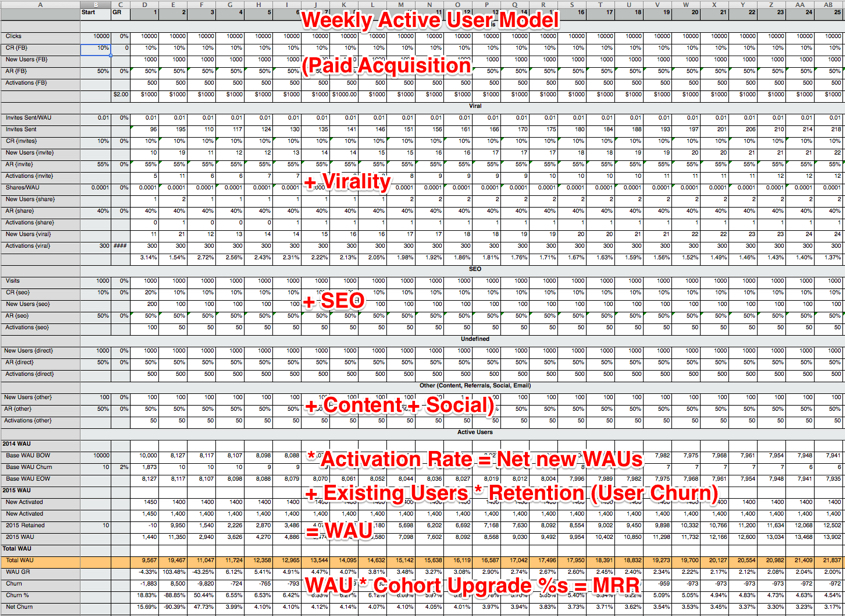
Photo credit: http://onstartups.com/insider-look-at-hubspot-sidekick-growth-approach
It’s separated by channel; for their case it is paid ads, content marketing, SEO, and user invites.
The SideKick growth team did a great job drilling down into the details to make sure a channel was actually driving revenue, because they knew more acquisitions from a certain channel does not necessarily mean that channel creates the customers’ with the highest LTV.
Therefore, it is wise to monitor:
- how many people sign up
- how many people are actively using it (the KPI)
- the retention rate of each channel
- the churn rate of each channel
With this type of data, you can easily see what channel is actually driving your best customers. And when you find that out, you know where to put most of your marketing efforts towards.
Tactics for Acquiring New Customers
A quick note: Don’t put all your eggs in one basket. There’s always something that can go wrong or an industry change can occur that can negatively affect the success of your best channel.
While we highly recommend to take advantage of your best channel, always be testing at least two other big channel opportunities. But first…
Start with Finding Your Best Audience
Before you start any type of marketing, you must identify what audience or group of people your product will save the most money, save the most time, and/or create the most value with your product.
If you think you already have this data, take a second look to make absolute sure as this is the key to early growth in a SaaS company.
If you have existing customers, create surveys asking them relevant demographic and industry type questions. Then ask how helpful is this product in saving you time, saving you money, or creating value. Then you can sort your answers by their industry to get a better picture.
As a founder or VP of marketing, you probably have a general idea who this audience is, but I’d highly recommend taking a second look, because this is again the foundation of successful growth.
Here’s some ways you can do this outside of surveying your own customers.
1. Use Your Competitor’s Acquisition Channels
You probably have an idea to some extent who your competitors are. If you don’t think you have any, you’re probably wrong. This includes products that might not be exactly the same as yours, but what your customers could use instead to get close to the desired solution.
Here’s the best way to do this. Use Buzzsumo to search your competitor’s name mentions across the web. For example, if you had an accounting SaaS product and you’ve identified Freshbooks as your competitor, you can search Buzzsumo for “freshbooks -freshbooks.com” and it will pull up a list of pages that mention Freshbooks (that’s not Freshbooks themselves) sorted by total share count.
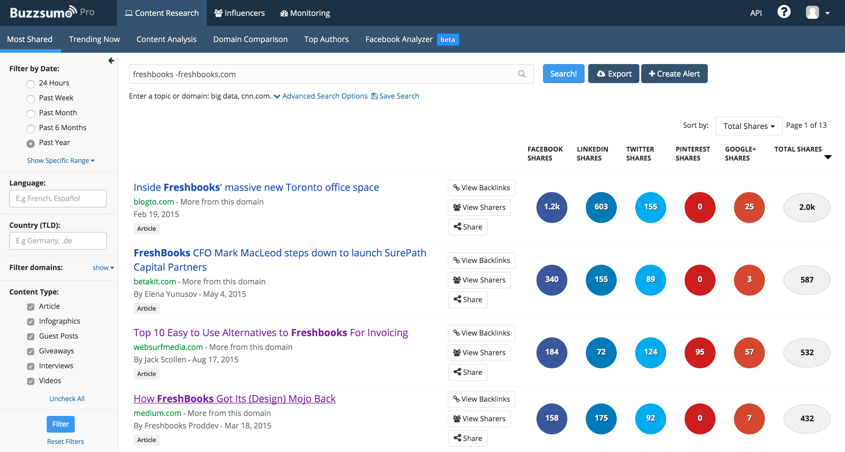
2. Find People Asking for Help on Twitter
One of the best features of Twitter is it’s search.
You can search for keywords that people would use to ask for help with a problem your product solves. For example, if your product is invoicing software, you can search Twitter for keywords as basic as “invoice recommendations,” “best invoice software,” “invoicing software,” etc.
What sometimes works better is using Twitter’s advanced search. You can search with exact phrases, any one of these words, without these words, and search for questions only.
Here’s one I found quickly using the advanced search:
Does anyone have recommendations for online invoicing systems for the German (and EU) market? #invoice
— Yannic Dosenbach (@ydosen) October 6, 2015
When you find people asking for recommendations or help, don’t just reply with a link to your product, but engage with them using a real, helpful answer. If you have the time to avoid using any kind of template as well, this tactic will work much better.
You can take this a step further and add all the people you’ve replied to to a Twitter list to come back to later.
3. Answer Questions People Ask on Quora
When you create a Quora account, you can monitor certain topics and always have the most relevant questions in front of you.
Continuing with our invoice SaaS company above, you can follow the topic of “invoices” and you’d find and be able to comment on questions like this one:
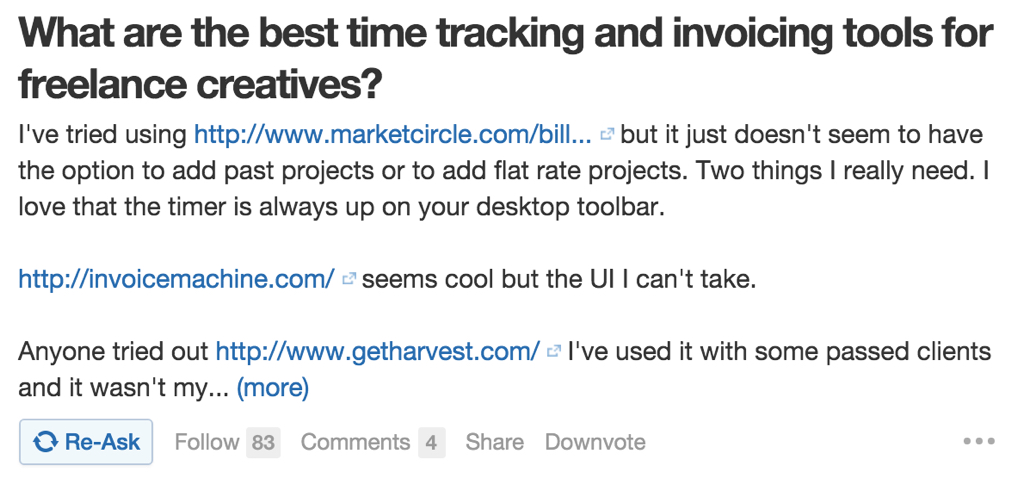
Not only will these methods serve to help you find your audience, they will also help you get your SaaS product’s name in front of these audiences. If that’s not hitting two birds with one stone, I don’t know what is.
Now that you know who to talk to, you can now determine how to talk to them.
4. Deliver the Right Message
Now you know your best audience for your product, you can deliver the exact messaging that will just make your product click for them.
Going back to Freshbooks, they use the headline “Accounting Made for You, the Non-Accountant.”
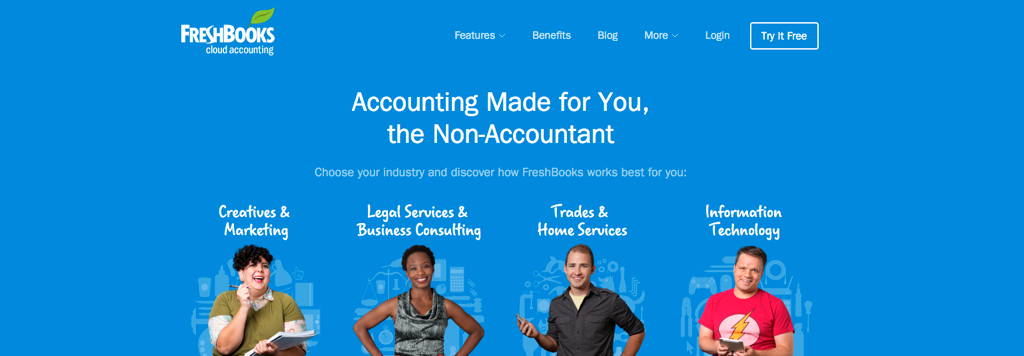
Freshbooks is a simple to use accounting SaaS product that’s easy to use for people who’ve never done or are not used to doing their own accounting.
This message hits their audience right on the head.
5. Position Your Product for Your Best Audience
Since you know the biggest pain point your product solves for your customers, you need to shout it at them – or at least create your value proposition out of it and put it dead center on your homepage so new visitors can’t miss it.
I love what the project management software Trello has done. They know the biggest pain points and list them all out as a thing of the past if you sign up for their service.
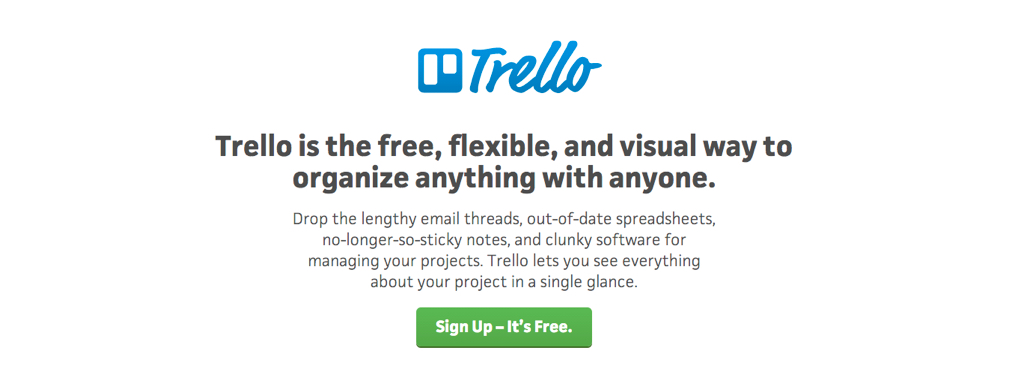
In the main headline, they describe what it is. In the second headline they describe how their product solves each one of their biggest pain points in conversational language that people can relate to, identify with, and say to themselves, “Hey, this would be perfect for me.”
6. Create Educational and Helpful Content on Your Blog
For most SaaS products, customers will benefit from educational articles that can…
- show them how to solve their problem
- show them why your product makes it 10x easier
- help them succeed at their ultimate goal
A great example is Buffer whose product helps people succeed at social media by scheduling and automating social posts on multiple social media accounts.
Co-Founder Leo Widrich credited creating content for over 70% of their daily signups. He was writing articles himself 2-3 times a month and not long after to 3-4 times a week. The article topics all catered towards helping people get more followers on social media channels, social media optimization tips, and how to drive traffic with social media – all content that’s useful for their audience.
Their blog educates their customers on how to use Buffer more effectively and how to do social media marketing more effectively so they can help their customers reach their ultimate goal.
For this strategy to work, your content needs to be nothing short of epic. Find the best content that’s already out there on your topics and make them twice as good.
It needs to be good enough for people to want to share with their team, coworkers, friends, etc. If it’s not being shared, it’s most likely not going to help with acquiring customers.
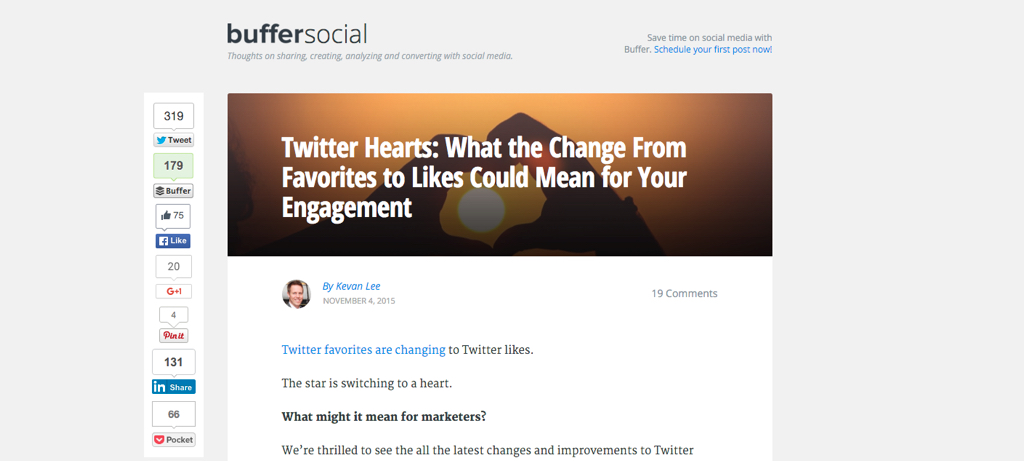
7. Create The Last Guide Your Customer Will Ever Need to Succeed
Taking creating content to the next level would be to create an epic guide for your customers to succeed at their ultimate goal.
For SEO software company MOZ, their customers’ ultimate goal is to succeed at SEO and rank their websites for the right keyword that will ultimately drive traffic and revenue.
So they created one of if not the best Beginner’s Guide to SEO. Not only is it epic for being 10 chapters long, but also because they use custom graphics and illustrations to help break up huge walls of text and make the content more engaging.
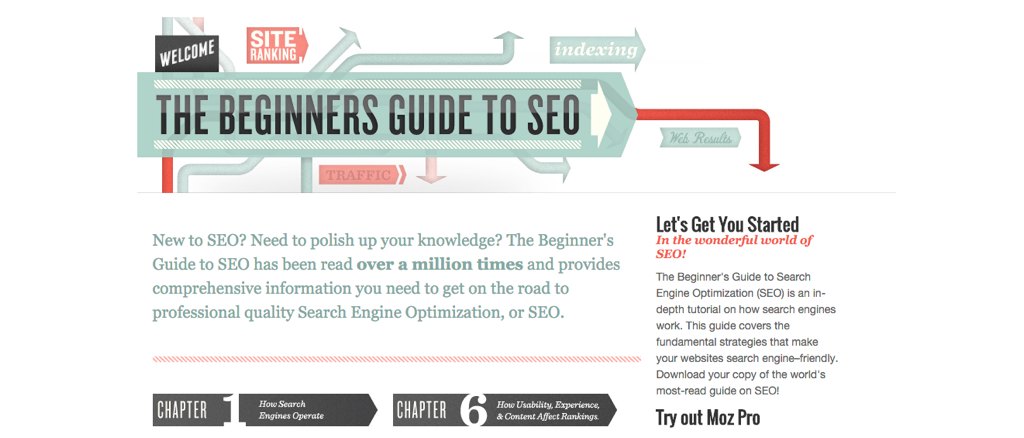
If you can create a guide like this for your customers, you must not take it lightly. If you really want to make a dent in the world of content out there, you should strive to make your guide at least twice as good as the best guide out there right now.
8. Contribute Guest Posts on Influencer’s Blogs
The next step Buffer took with their content strategy was to produce content for other blogs who already had huge audiences of their target market.
Once Leo had grown an audience himself and proved he could create content that was popular with his audience, he began to pitch ideas to influencers for guests posts.
This strategy got him and his SaaS product in front of hundreds of thousands of potential customers who would immediately find value with his product.
Brian Dean of Backlinko has an excellent guide to getting guest posts on influencers’ blogs.
9. Optimize Your Articles for Search Engines
When you’ve identified the major pain points your product solves, you will be able to do keyword research and see if people are searching Google for solutions to their problem.
Keyword research shouldn’t take you more than a few hours if you follow this guide from Backlinko. If you have a high LTV, a low monthly search volume of a few hundred can reap great recurring benefits for your acquisition strategy.
Once you’ve done the research and you see there are opportunities, optimize your service pages and key blog articles for those search terms and you could be bring in relevant traffic every month.
The cons with this tactic are the keywords for your product may be competitive and near impossible to rank and if you can rank, it may take a long time to see results; however, it is still a good idea as a long term play and if you’re creating truly valuable content, people will share it.
10. Capture Your Readers’ Email Addresses
On your blog posts, you need to have subscriber form to get their contact information.
Some people aren’t going to give you their name and email address without anything in return. You can incentivize them with an offer of something of value to them in exchange for signing up, but don’t let that hold you back from doing it now.
Right at the top of their blog homepage, Zapier uses the top half of the page to get you to sign up for email updates.
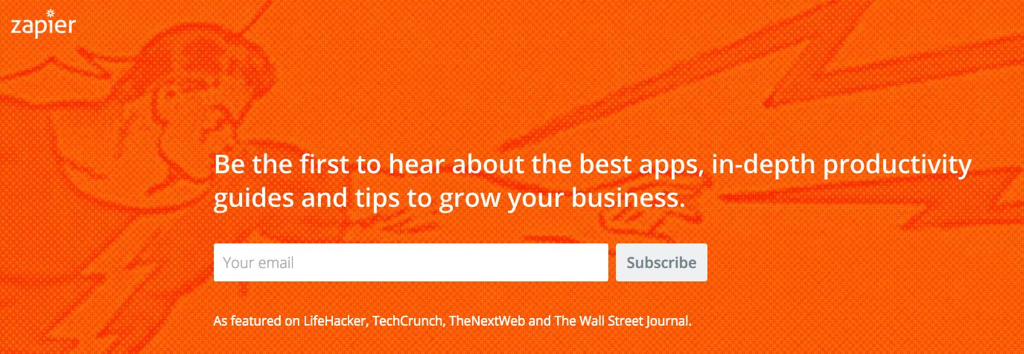
They also put a smaller one on the top of the page for individual blog articles.

Email lists are valuable for acquisition, because you send your list an email whenever you publish your next piece of epic content and you need to get the word out.
For these people, they may not be ready to buy now, but they may buy in the future when the time is right and they understand the value of your product.
Plus, the people who do subscribe, are probably real fans of your content (possibly your product) and will be more likely to share your content with their network.
11. Make Your SaaS Product Integrate with Other Apps
One of the biggest reasons why people love MailChimp (besides it being easy to use) is that it has tons of integrations out there with other existing products that their customers are already using.
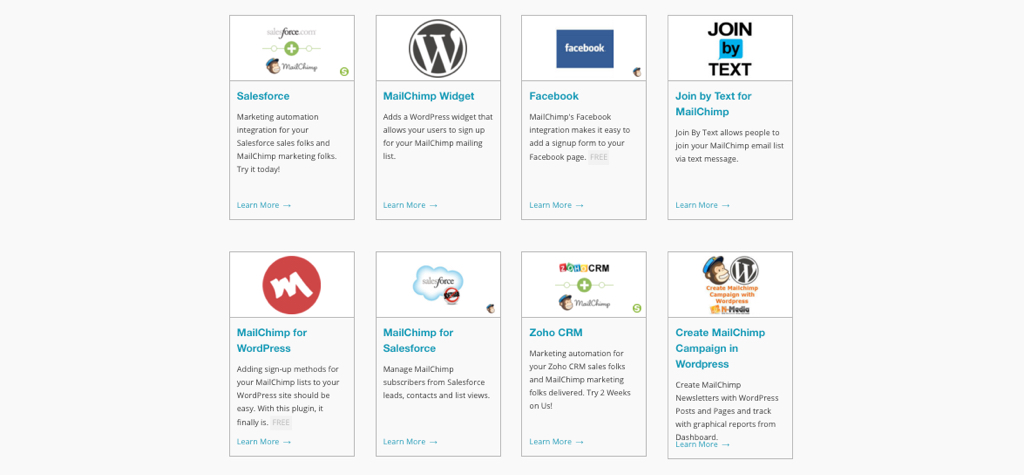
Creating a public API will help developers of other apps work with your app. It’s a win-win for both companies.
People already have existing workflows and if your product can fit seamlessly into their workflow, they will definitely consider your product a lot more carefully and even go as far as to accept less features than a competitor product simply because of a working integration.
Additionally, integrations can help get your name out there and boost your search engine rankings through backlinks on your partner pages.
12. Host Educational Webinars, But Not Sales Pitches
Before you say they’re too hard, webinars have been contributed as a huge growth strategy.
Because they are live events that occur at a specific time of day, you would think that they wouldn’t be that effective because they seem inconvenient for people to attend.
However, the exact opposite is true.
When people sign up for a webinar with a specific date and time, they will place more value into the webinar’s content. They’ll say to themselves, “Oh, this must be really important and good. I’ll move my schedule around to attend.”
And webinars are extremely powerful, because once someone is on, they have your voice inside their ears absorbing everything you say. This is super powerful because…
- for a brief moment in time, all their attention is on you and you can say whatever you want
- because they can hear your voice, they will feel like they “met” you without ever having actually met you
- they will trust you
The analytics SaaS company Kissmetrics uses webinars to educate their target audience to succeed at better understanding their analytics data and how to use that data to improve their business by making data-based, informed decisions.
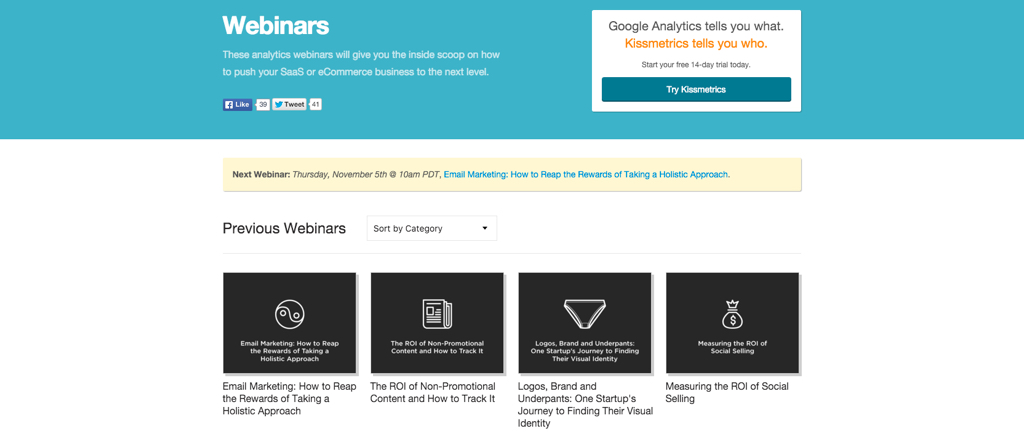
GoToWebinar has become an industry standard for webinar providers and for good reasons. It can handle hundreds of people on one webinar and is cost effective.
What Are You Doing For Your B2B Customer Acquisition?
Customer acquisition isn’t easy, but a strong acquisition strategy can continually bring in new customers every week.
We can’t stress enough how important it is to build out your customer profiles first and monitor each acquisition channels performance.
It’s imperative to your success that you monitor and adjust your strategy and channel as your progress through your growth phase.

